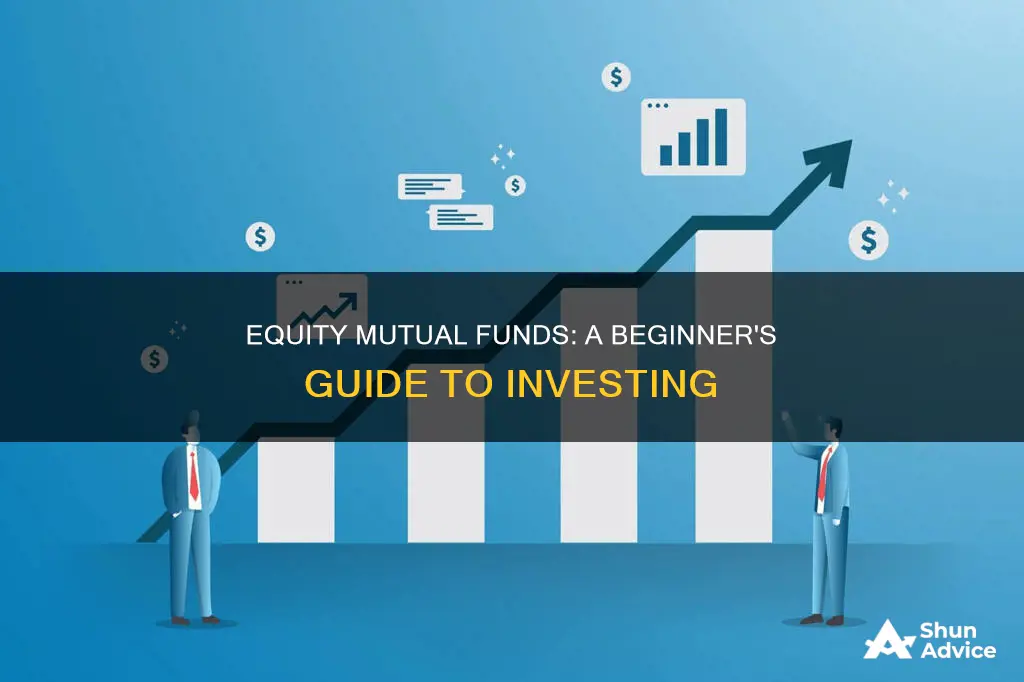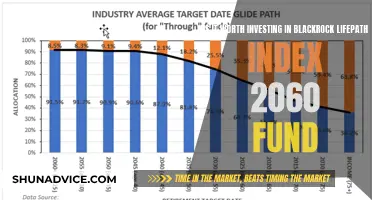
Investing in equity mutual funds is a popular way to grow your wealth over time. Equity mutual funds are a type of mutual fund that invests primarily in stocks or other equity securities. Here are the steps to get started with investing in equity mutual funds:
- Determine your financial goals and risk tolerance: Are you investing for retirement, a down payment on a house, or something else? How much risk are you comfortable with taking?
- Assess your investment horizon: How long do you plan to invest for? Generally, longer investment horizons can accommodate more risk and potentially higher returns.
- Choose the right type of equity mutual fund: There are different types of equity funds, such as large-cap, mid-cap, small-cap, growth, value, or a blend of these styles. Select the funds that align with your financial goals, risk tolerance, and investment horizon.
- Decide between active and passive management: Actively managed funds aim to beat the market by actively picking stocks, while passively managed funds, such as index funds, aim to replicate the performance of a specific stock market index.
- Research and compare equity mutual funds: Look at the fund's performance over time, its expense ratio, the fund manager's expertise, and its investment objective.
- Choose a reputable fund company: Consider the fund company's track record, customer service, and reliability.
- Open a brokerage account: You can open an account with an online brokerage or directly with the fund company.
- Start investing: Decide how much you want to invest and whether you want to invest a lump sum or through systematic investment plans (SIPs).
- Monitor and adjust your investments: Regularly review the performance of your equity mutual funds and make adjustments as needed to stay aligned with your financial goals and risk tolerance.
What You'll Learn

Choose between active and passive funds
When choosing between active and passive funds, investors should consider their financial goals, risk tolerance, and investment strategy. Active funds are managed by portfolio managers who actively select and monitor investments, aiming to beat the market. This approach involves higher costs, more frequent buying and selling, and potential for higher returns but also comes with higher risks. On the other hand, passive funds track a preset index of investments and are managed by fund managers who buy and hold these investments for the long term. This approach is more hands-off, has lower fees, and historically has earned more money than active investing.
Active investing appeals to investors who want a hands-on approach and are willing to take on more risk to potentially beat the market. It involves deeper analysis and expertise to know when to pivot in or out of a particular stock, bond, or asset. Active investing requires familiarity with fundamental analysis, such as interpreting company financial statements, and the ability to react quickly to market changes. It is more suitable for investors with the time and resources to devote to research and trading.
Passive investing, on the other hand, is a more passive approach, as the name suggests. Passive investors buy a basket of stocks and regularly buy or sell regardless of market performance. This strategy is often used by investors with a long-term mindset who want to disregard the market's daily fluctuations. Passive funds have ultra-low fees, good transparency, and tax efficiency due to their buy-and-hold strategy. The most popular passive investments are funds built on the S&P 500 index, which tracks the largest American companies, offering investors close to the market's long-term average return of about 10% annually.
While active investing has its place in the market, passive investing has become more prevalent among retail investors and has garnered more investment flows than active investments. Passive investing is also favoured by billionaire investor Warren Buffett, who recommends buying low-cost S&P 500 index funds regularly as the best option for regular investors.
In summary, active funds offer the potential for higher returns but come with higher costs and risks, while passive funds offer a more hands-off approach with lower fees and historically stronger performance. The choice between active and passive funds depends on the investor's financial goals, risk tolerance, and investment strategy. Many investors choose to blend the two strategies to take advantage of the strengths of both.
Mutual Funds: Active Management Advantage Over Index Funds
You may want to see also

Calculate your budget
Calculating your budget is a crucial step in determining how to proceed with investing in equity mutual funds. Here are some key considerations to help you calculate your investing budget:
- Minimum Investment Amounts: Mutual funds typically have minimum investment requirements, which can range from as low as $100 to $5,000 or more. Some funds may even have a $0 minimum, allowing you to invest in a mutual fund for as little as $1. It's important to review the specific requirements of the funds you're interested in.
- Comfortable Investment Level: Aside from meeting the minimum investment amount, consider how much money you are comfortable investing. Assess your financial situation, including your income, expenses, and any other financial commitments. This will help you determine how much you can comfortably invest without stretching your budget too thin.
- Initial Mix of Funds: If you've decided to invest in mutual funds, the next step is determining the initial mix of funds that aligns with your risk tolerance and investment goals. Generally, a good rule of thumb is to have more conservative investments as you approach retirement age, as these tend to be less risky. Younger investors can typically tolerate more risk and may seek higher returns.
- Expense Ratios: When investing in mutual funds, you'll also need to consider the expense ratios associated with the funds. This is the annual fee charged by the fund company, expressed as a percentage of your investment. A lower expense ratio means a larger portion of your money goes towards generating returns. Be sure to review the expense ratios of the funds you're considering to ensure they fit within your budget.
- Brokerage Fees: If you choose to invest through an online brokerage, there may be additional fees to consider. Some brokerages charge transaction fees for buying and selling mutual funds, while others offer no-transaction-fee funds. Additionally, some brokerages may have account maintenance fees or other charges. Be sure to review the fee structure of the brokerage before opening an account.
- Long-Term Investment Horizon: It's important to remember that investing in mutual funds is typically a long-term strategy. The value of your investments may fluctuate in the short term due to market conditions, but over the long term, you can benefit from compound interest and potentially grow your wealth. Therefore, when calculating your budget, consider your long-term investment horizon and ensure you're comfortable with the level of risk and potential returns associated with mutual funds.
A Beginner's Guide to Investing in Nasdaq Funds
You may want to see also

Decide where to buy
You can buy mutual funds in a few different ways. If you contribute to an employer-sponsored retirement account, such as a 401(k), there’s a good chance you’re already invested in mutual funds.
You could buy directly from the company that created the fund, such as Vanguard or BlackRock, but doing so will limit your choice of funds. You can also work with a traditional financial advisor to purchase funds, but it may incur some additional fees.
Most investors opt to buy mutual funds through an online brokerage, many of which offer a broad selection of funds across a range of fund companies. If you go with a broker, you'll want to consider:
- Affordability: Mutual fund investors can face two kinds of fees: from their brokerage account (transaction fees) and from the funds themselves (expense ratios and front- and back-end “sales loads”).
- Fund choices: Workplace retirement plans may carry only a dozen or so mutual funds. You may want more variety than that. Some brokers offer hundreds, even thousands, of no-transaction-fee funds to choose from, as well as other types of funds like ETFs.
- Research and educational tools: With more choice comes the need for more thinking and research. It's vital to pick a broker that helps you learn more about a fund before investing your money.
- Ease of use: A brokerage's website or app won't be helpful if you can't make heads or tails of it. You want to understand and feel comfortable with the experience.
You can also buy mutual funds through a mutual fund distributor registered with AMFI. This distributor can be an individual, a bank, or a broker house.
A Guide to Investing in Franklin Templeton Mutual Funds
You may want to see also

Understand fees
When investing in mutual funds, it's important to be aware of the various fees involved, as these can significantly impact your overall returns. Here's a breakdown of the common fees associated with mutual funds:
- Expense ratio: This is an annual fee that covers the fund's operating expenses, such as management fees, administrative costs, and marketing expenses. It is expressed as a percentage of the fund's average net assets and is deducted from the fund's returns. For example, a fund with a 1% expense ratio means you pay $10 for every $1,000 invested. Expense ratios can vary between funds, so it's important to review this carefully before investing.
- Sales charges or loads: Some mutual funds charge sales fees, known as "loads", when you buy or sell shares. Front-end loads are charged when you purchase shares, while back-end loads are assessed if you sell your shares before a certain date. No-load funds, on the other hand, don't have any sales commissions, offering a more cost-effective option for investors.
- Redemption fees: Redemption fees are charged when you sell your mutual fund shares within a short period, typically 30 to 180 days, after purchasing them. These fees are designed to discourage short-term trading and maintain stability within the fund.
- Other account fees: In addition to the fees mentioned above, some funds or brokerage firms may charge extra for account maintenance or transactions, especially if your account balance falls below a certain minimum.
It's worth noting that mutual funds with high fees don't always deliver better performance. In fact, passively managed funds, such as index funds or ETFs, often have lower fees than actively managed funds and can provide better returns. When considering a mutual fund, carefully review the fee structure and weigh it against the potential benefits to make an informed decision.
Large-Cap Funds: When to Invest for Maximum Returns
You may want to see also

Manage your portfolio
Once you have decided on the mutual funds you want to buy, you will need to think about how to manage your investment.
One strategy is to rebalance your portfolio once a year, with the goal of keeping it in line with your diversification plan. For example, if one slice of your investments has performed well and now constitutes a bigger share of the pie, you might consider selling off some of the gains and investing in another slice to regain balance.
Sticking to your plan will also keep you from chasing performance. This is a risk for fund investors who want to get in on a fund after reading about how well it has done in the past year. However, past performance is not a guarantee of future results. It is not advisable to stay put in a fund forever, but chasing performance almost never works out.
Managing your portfolio also means managing your expectations, and different types of mutual funds should bring different expectations for returns. For example, stock mutual funds carry the highest potential rewards but also higher inherent risks. Bond mutual funds, on the other hand, provide a more stable rate of return than stock funds, and as a result, potential average returns are lower.
Money market mutual funds are considered one of the safest investments, but they also have the lowest returns. These funds are used by investors who want to protect their retirement savings but still earn some interest.
As an investor, it is important to understand the fees associated with mutual funds, as these costs will significantly affect your investment returns over time. Here are some common fees to look out for:
- Expense ratio: This is an annual fee that covers the fund's operating expenses, and it is expressed as a percentage of the fund's average net assets.
- Sales charges or loads: Some mutual funds charge sales fees when you buy or sell shares. Front-end loads are charged when you buy, while back-end loads are assessed if you sell your shares before a certain date.
- Redemption fees: Some mutual funds charge a fee when you sell shares within a short period (usually 30 to 180 days) after purchasing them.
- Other account fees: Some funds or brokerage firms may charge extra for maintaining your account or transactions, especially if your balance falls below a certain minimum.
Maximizing Investment Funds: Strategies for Financial Success
You may want to see also
Frequently asked questions
There are several ways to invest in equity mutual funds. You can either invest online through the fund house's website or mobile application, or you can opt for offline investment by visiting the nearest branch office of the fund house or through a broker.
Equity mutual funds offer several benefits, including diversification, professional management, liquidity, accessibility, affordability, flexibility, and tax benefits. Diversification is the most important advantage as it reduces risk by spreading your money across different assets.
When selecting an equity mutual fund, consider your financial objective, investment horizon, and risk tolerance. Assess the fund's performance, expense ratio, fund manager's expertise, and ensure it complements your existing investments.
You can invest in equity mutual funds from your bank account by using online or offline modes. For online investments, link your bank account to the fund house's website or platform. For offline investments, visit the fund house's branch office or a distributor and submit a cheque or bank draft along with the necessary documents.







